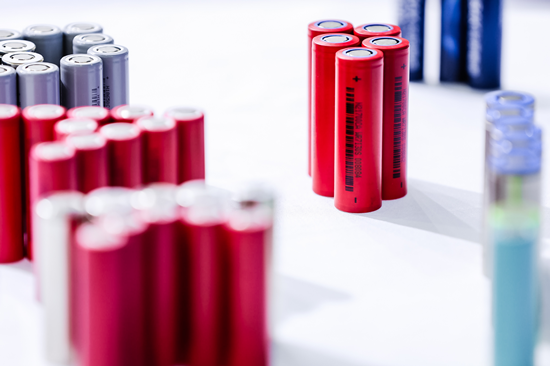What Does The C Rating On LiPo Batteries Mean?
Sep 10, 2019 Pageview:1674
When a consumer is buying a battery, there are several factors that they consider including voltage, capacity, and discharge. You might have noticed something like this written on the batteries- 50C, 5000mAh, 3C Charge Rate, and 2S 7.4V.
Have you ever wondered what do all the numbers on the batteries mean? Well here, we are going to clear your doubt about one alphabet that you have usually seen on LiPo batteries, i.e. C. Most of the people have no idea what these alphabets and numbers mean. So, let’s start the discussion.
What Is C Rating On LiPo Battery?
C Rating is one of the most important factors that a consumer needs to consider while purchasing LiPo batteries. C Rating is the indicator of discharge rate of a LiPo battery. So, by knowing the number, you can calculate the maximum amount of constant current that consumers can draw from the pack without any harm. The formula is Max Current Draw= Capacity x C-Rating.
So, if you have a battery with 50 C Rating and 5000 mAh current, then the Maximum current= 5000 x 50. So, you can draw 250A current from the LiPo battery pack.
Almost every Lithium Polymer battery today comes with a C rating where C stands for Capacity. It is the C rating that determines the maximum safe amount of continuous discharge rate of the battery pack. There are also some other batteries which come with a burst discharge rate value. Typically, the burst rate is twice the discharge rate. It signifies how much the battery is capable of holding but for a few seconds only.
We all know that Lithium-polymer batteries are more volatile than other battery types. This is the main reason why a standard rating system is established for this technology.
Is A Higher C Rating LiPo Battery Better?
There is no denying the fact that all batteries are not created equal. Along with this, the C rating is a small part of the big picture. We have already clarified that the C rating refers to the maximum amount of sustainable current drawn from a battery pack. The only thing that limits the current draw considerably is the amount of heat generated in the pack. A higher C battery pack will have less internal resistance. As a result, it will generate less amount of heat for a given load, i.e. it can handle bigger loads as well.
But if a load of your device is less than the C rating you are using, then the rating will have no significant role to play. There will be no use of higher C rating unless you are dealing with higher load. The main point of giving the higher capacity battery pack is to deliver the power of the pack in an efficient way. The less power will be wasted as heat and the load can be as high as you most likely to use. But the difference is not as big that you will be able to notice it. Still, a higher C rating battery will be able to improve the performance, so, it is worth a try.
What Can You Do To Protect C Rating LiPo Battery?
Without the LiPo battery technology, the drones and quadcopters would cease to exist. Yet, this is one of the most dangerous types of Lithium batteries. Even a drop, dent, or crush can shorten the lifespan or lead to internal short-circuits. They are the perfect recipe for fire. Therefore, strict guidelines are given to take care of the batteries including storage, charging, and transport. Here are the protection guidelines that you need to follow:
1: Before Charging:
· Always check the battery voltage before you plug them in a charger. The starting voltage needs to be maintained properly. If the starting voltage is less the recommended level, then the battery will have a risk of over-discharge. This will cause failure, so, charging must be avoided.
· Check if there are any signs of physical damage on the battery pack. Keeping the battery pack intact is very important along with its packaging, wires, and connectors. If they are damaged, there will be a risk of short-circuit or battery failure.
2: During Charging:
· Use a charger which is specifically designed for the battery.
· Charge the LiPo battery in an open area and keep it far away from the flammable materials, liquids, and surfaces.
· Don’t plug the charger when the battery is inside the device.
· Never charge the LiPo battery below the freezing point.
· Avoid putting the batteries on charge when they are hot.
· Don’t set the charging rate higher than 1C.
· Always charge the batteries up to their ideal voltage.
· To ensure safety, consider using a LiPo sack during charging.
3: Discharging LiPo Batteries:
· Don’t discharge the battery lower than the given label.
· Make sure that the battery temperature doesn’t go below 140 degrees F.
· Keep the cut off voltage ideal and don’t discharge to a level below 3V per cell under load.
· Keep the batteries safe as they can accidentally leak or react with air. Observe them all the time to avoid unwanted incidents.
4: Storage:
· Never ever store loose LiPo batteries together. The terminal coming in contact could possibly lead to short circuit.
· Don’t store the batteries in extreme temperatures. Also, keep them away from direct sunlight. Consider the ideal storage temperature and humidity range for the battery you are using.
· When the battery is not in use, disconnect it and store them in a non-conductive and fireproof container.
· Keep all the components of the battery intact under all circumstances.
There are many other things in general which you need to take care of. Striking the battery with sharp and pointy objects, deforming, dropping, hitting, or disassembling should be avoided at all costs. And last but not least, never ever incinerate or dispose of the LiPo battery in fire or water.
- Prev Article: What Happens When A Lithium Battery Explodes?
- Next Article: Old LiPo Battery – Common Dispose
Leave Message
Hottest Categories
-
Hottest Industry News
-
Latest Industry News











